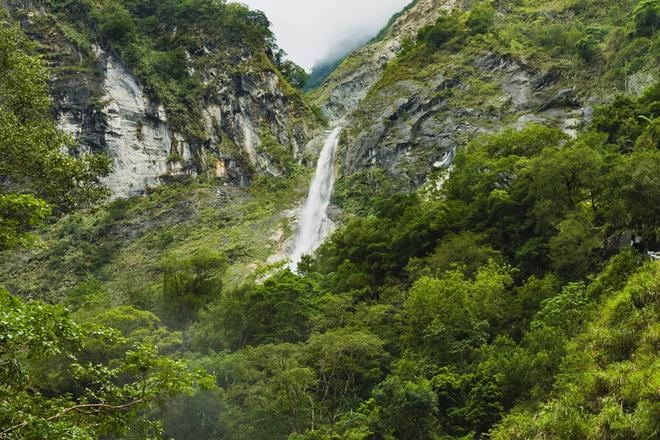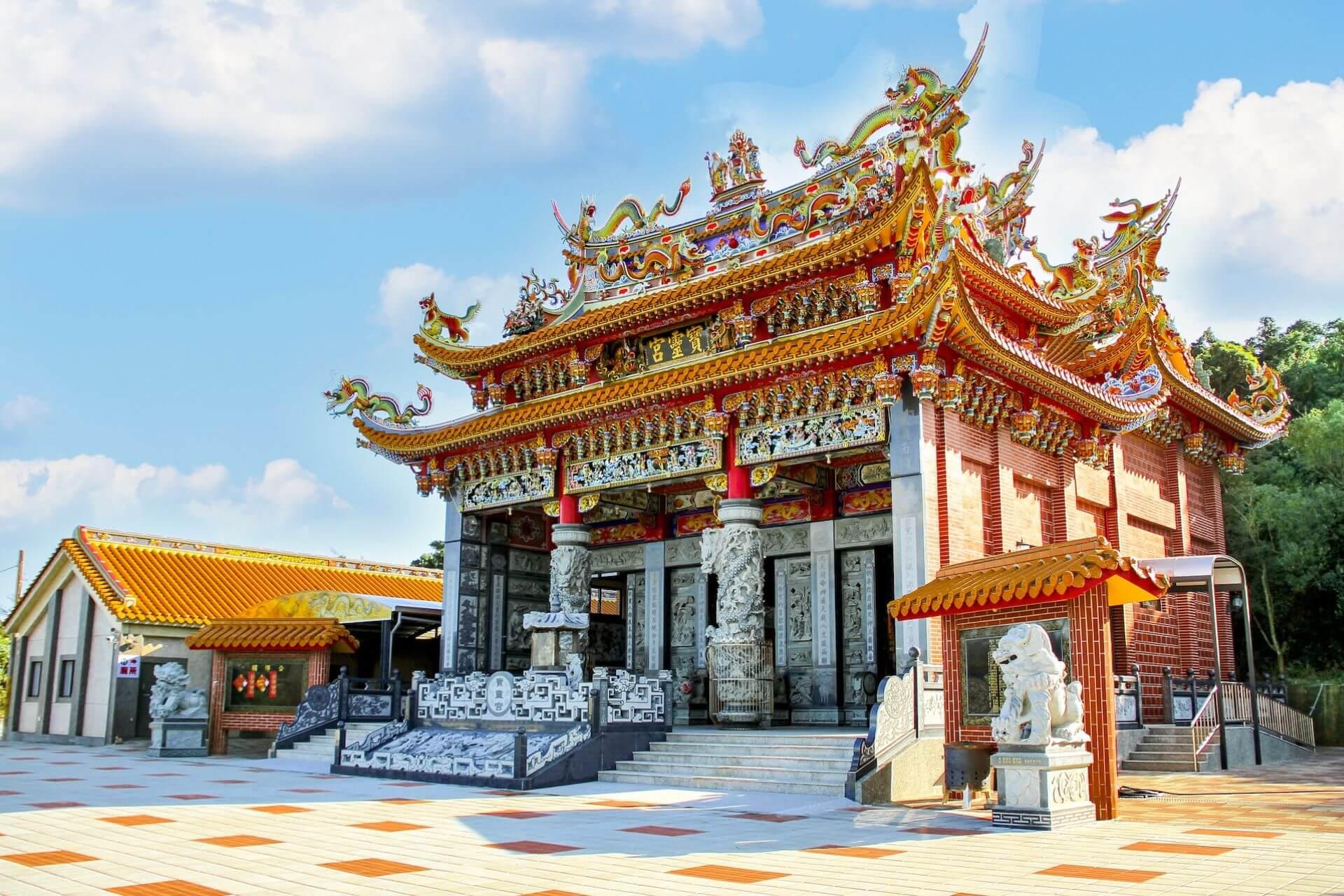Almost 40,000 square kilometres are crammed with imposing mountains nearly 4,000 metres high, sandy beaches and wild cliffs, delicious oolong tea plantations, lush green tropical forests, thermal springs, ancient temples of three religions and modern cities bustling with life. And the best part? Taiwanese people and their unobtrusive hospitality and exquisite island cuisine are the cherry on top of exploring an island that smells of flowers and the smoke of prayer sticks.
Lake of the Sun and Moon: a mosaic of temples and breathtaking scenery
The lake with its azure water, ornate temples and scenery of the surrounding hills can be found in the heart of the island. The entire lake can be circumnavigated in a leisurely 30-kilometre bike ride, stopping at all the sights at will. The cycle path winds from Shuishe village along the western shore of the lake, cutting through verdant jungle to a circular road that climbs to the Ci'en Pagoda, built by Chinese General Chiang Kai-shek in honour of his mother. The leader of the Chinese National Party, the Kuomintang, withdrew to Taiwan from mainland China in 1949 ahead of the victorious Communist movement with his army and followers numbering two million, and ruled the country for more than twenty years.
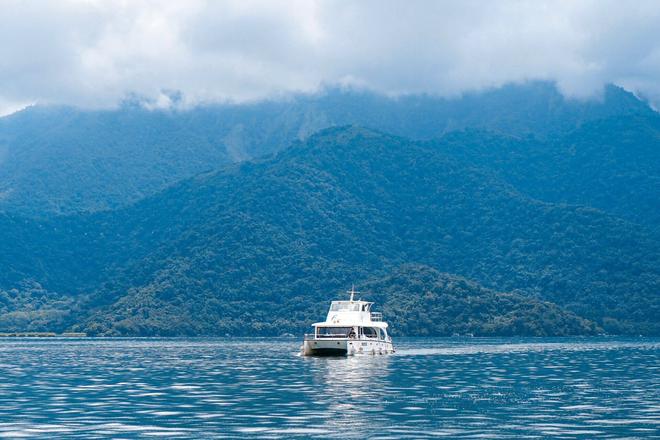
You'll take in panoramic views of the lake's azure surface shimmering amidst lush vegetation, see a pair of Buddhist temples on the eastern shore, and delight your palate with delicious delicacies in the village of the indigenous Thao tribe. The tour concludes at the monumental Wen-wu Taoist Temple, which dominates the northern shore of the lake. The atmosphere here is set by the intoxicating smoke from the prayer sticks, the scent of fresh flowers and a host of ornate statues of gods and goddesses.
Alishan: an oasis of tranquillity with the scent of Taiwanese oolong
The origin of the railway, which covers a distance of 70 km over an elevation of about 2000m, dates back to the early 1900s, when camphor trees were extensively mined here during the colonial period. During the 50 years of Japanese rule (1895 – 1945), Taiwan became one of the world's largest producers of this highly aromatic substance with medicinal properties.
Today, much of the mountain railway is out of service, but small red narrow-gauge trains still rumble through the serpentine forest reserve of Alishan. The vast forest park at over 2,000m has a number of ancient cypress trees, picturesque pools, temples and stalls selling the delicious local tea. In fact, the entire Alishan area is famous for its high altitude Taiwanese oolong tea. Aside from the tea, the breathtaking views of the sunrise over the highest mountain, Yushan (from Chunschan Peak, 2,489m), or the sea of clouds that envelop the mountains in the afternoon, also attract visitors here. In spring, the delicate cherry blossoms are a popular attraction.
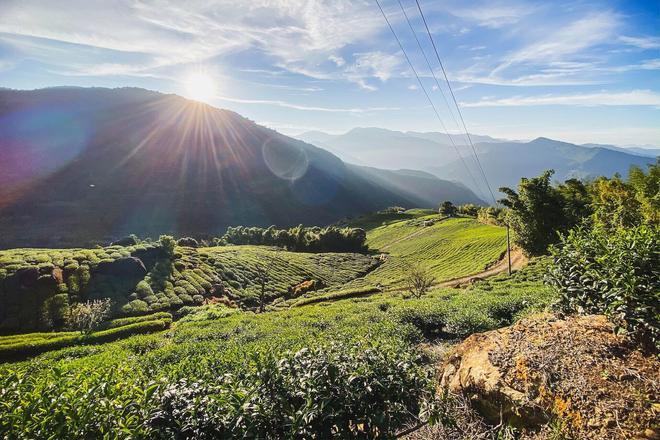
Tainan: the capital of temples and night markets
The former capital on the island's southwest coast remains a spiritual centre to this day, boasting the largest concentration of temples on the island. The richly decorated, colourful roofs of the local shrines peek out between the urban buildings on every corner. Thanks to religious tolerance, the colourful Buddhist or even overdone Taoist temples stand out alongside the sober Confucian ones.
Among the most prominent in Tainan is the temple of the goddess Ma-tsu, protector of sailors and fishermen widely throughout the island. Each temple counts a number of shrines to various gods and idols, who are depicted by numerous statues. The faithful walk around the temple, bowing to each deity, lighting incense sticks, burning prayer papers, carrying flowers or using a pair of wooden crescents to ask for answers to their questions. Temples are at their most magical at dusk, when the altars are bathed in the soft, warm light of hundreds of lanterns, the intoxicating smoke of incense wafts lazily through the air, and the whispered prayers of the faithful echo around.
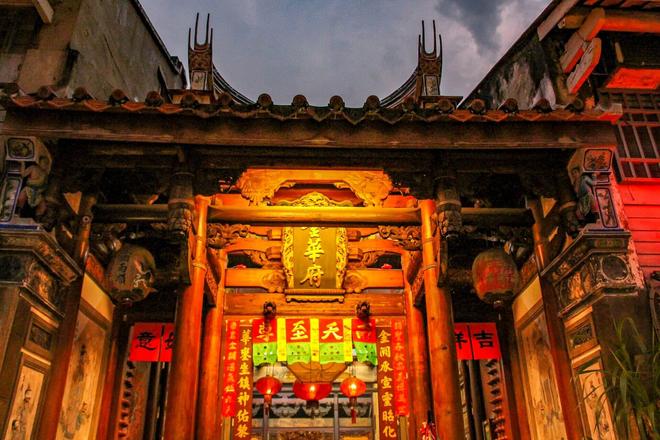
Tainan is also famous for its night markets, which are renowned throughout the island as a culinary treat. Thousands of people crowd the open-air stalls selling all sorts of delicacies and small goods. You wander the crowded aisles of the Flower Night Market, but the crowd is considerate and no one pushes. The enthusiasm of the Taiwanese for various games is curiously impressive – they entertain young and old alike at the night market. Be sure to sample the fresh seafood specialties, hearty broths with noodles or traditional stuffed dumplings. Wash it down with a typical Taiwanese milk tea or bubble tea – iced tea with juju balls at the bottom.
Taipei: 101 Tower and thermal springs
In contrast to historic Tainan, the island's political and economic centre, Taipei, pulses to the rhythm of the 21st century. Few visitors miss the view from the city's symbol – the 509-metre-high bamboo-stemmed Taipei 101 Tower, which at the time of its creation (2004) held the distinction of being the world's tallest building before being surpassed by Dubai's Khalifa Tower. An interesting feature of the skyscraper is the multi-ton pendulum on the upper floors of the building, which balances the structure in the event of earthquakes or typhoons.
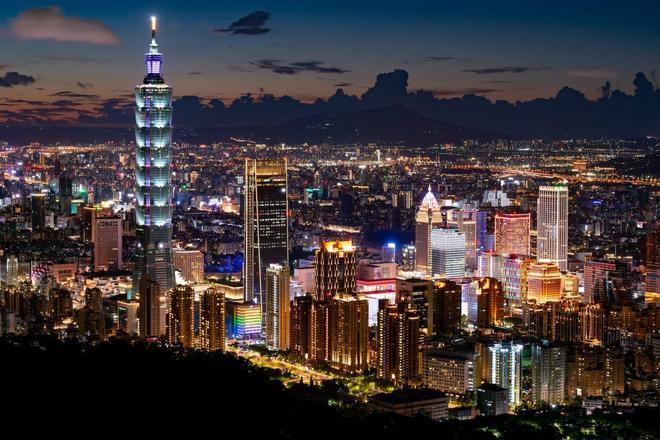
For a glimpse of the island's turbulent history, which still affects its international status today, visit the Chankaishka Memorial Hall. If you haven't had enough of the temples, one of the most beautiful in the city is the Taoist Baoan. Even in Taipei, you can enjoy the atmosphere of the night markets – head to Shilin Market, for example. Then a visit to some of the public thermal springs in the Beitou district will caress your body and soul.
Taiwan outdoors
Yushan's highest peak: a tropical near-four-thousand-foot peak
When you hike to the island's highest point, Yushan (3952m), you'll largely only meet locals. The climb to the summit, which is translated as Jade Mountain, is not difficult and can be done by anyone who can climb moderately well. You may find it harder to overcome the bureaucracy that precedes getting a permit, but that is also part of the cultural experience of the trip. The Taiwanese love order and organisation, so for Yushan you need to have a permit pre-arranged online and secure accommodation at the only lodge below the summit – Paiyun lodge (3402m). The summit itself is then popularly climbed at sunrise and descended back to the Tataka mountain pass (2600m) on the same day.
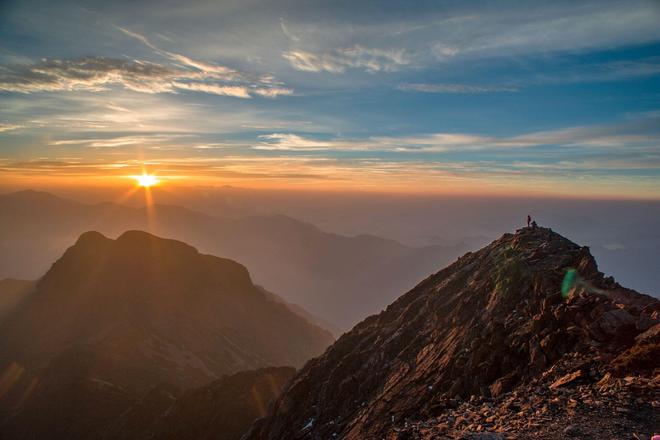
Hikes around Taipei
Half of the island is covered by mountains or dense forests, and there are many suitable places for hiking. For day hikes, check out Yang Ming Shan National Park in Taipei's northern suburbs, which is worth seeing year-round for its abundance of hot springs and steaming sulphur fumaroles, but most visitors head here during the Flower Festival (February – April), when the air is ablaze with blooming sakura or azaleas. You can take a walk among the tea plantations in the Maokong area south of Taipei. A famous but physically challenging hike is Wuliao Jian in the Sanxia area southwest of New Taipei – the trail traverses a narrow ridge of lush green vegetation above the sea, in places protected by ropes.
The Taroko Trampoline: a natural gem of marble
The very mountainous east of the island drops down steep slopes directly into the choppy waters of the Pacific Ocean. It was this coastline that Portuguese sailors saw in ancient history when they named the island Ilha Formosa (Beautiful Island).
In the Taroko Gorge in the eponymous national park in the northeast of the island, the landscape resembles images of Chinese landscape painting – dramatic cliffs, a raging river, jungle waterfalls and twisted branches of camphor trees. Here, the Liwu River has carved a canyon nearly 20 km long and several hundred metres deep into the marble bedrock. In some places, the canyon walls are only a few tens of metres apart!
You can hike around the gorge – through the numerous tunnels you can reach the two-storey Baiyang Waterfall, or you can hike through the jungle along the old Hehuan Mountain Trail. You'll be following in the footsteps of the Japanese colonists who tried to overpower the local tribes. Just watch out for your snacks, the local macaques can be pretty agile!
